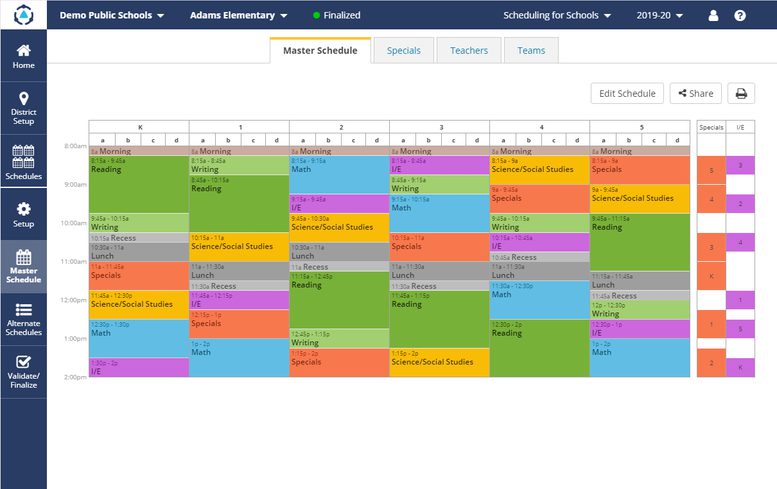This 12-part How to Build an Elementary School Schedule series shares expert step-by-step guidance and proven scheduling strategies to help you create better schedules this year.
As the new school year gets underway and you’ve had a chance to see your elementary school schedules in action, you should ask yourself how effective your schedules are. In the spirit of continuous improvement, look for opportunities to continue to strengthen your schedule, and make adjustments accordingly.
- Be open to last-minute adjustments
- Measure success
- Gather Feedback
What’s working well?
What are some of the challenges?
What would you change?
There may be last-minute changes in enrollment, personnel, or curriculum requiring adjustments to the schedule. These changes may occur up to and beyond the start of the new school year. Although change is hard, it is better to make small adjustments to improve the schedule than to live with a sub-par schedule.
Think back to the goals you established before you started scheduling (e.g. improving student outcomes, reducing referral rates, better workload equity for teachers). Has anything changed that will impact how you will measure the effectiveness of your schedule? Refine your metrics and continue to use them over the course of the school year to measure schedule effectiveness.
Consider conducting a short survey to collect schedule feedback from staff. Three simple schedule questions may be all that you need to gather real insights.
It is amazing the amount of useful information a simple survey can generate. Some feedback may help you implement improvements immediately, while other feedback can inform future goals. In some cases, feedback may also help improve scheduling practices and communication.

About DMSchedules
Create Better School and Staff Schedules Now with DMGroup’s DMSchedules Scheduling Software
Learn moreElementary Scheduling Software

